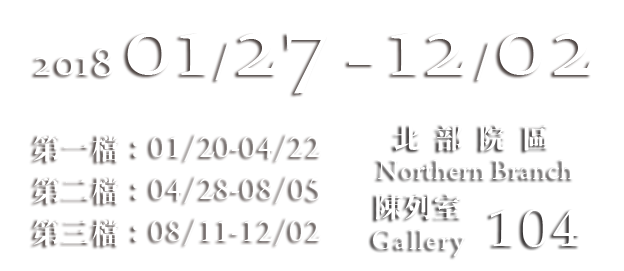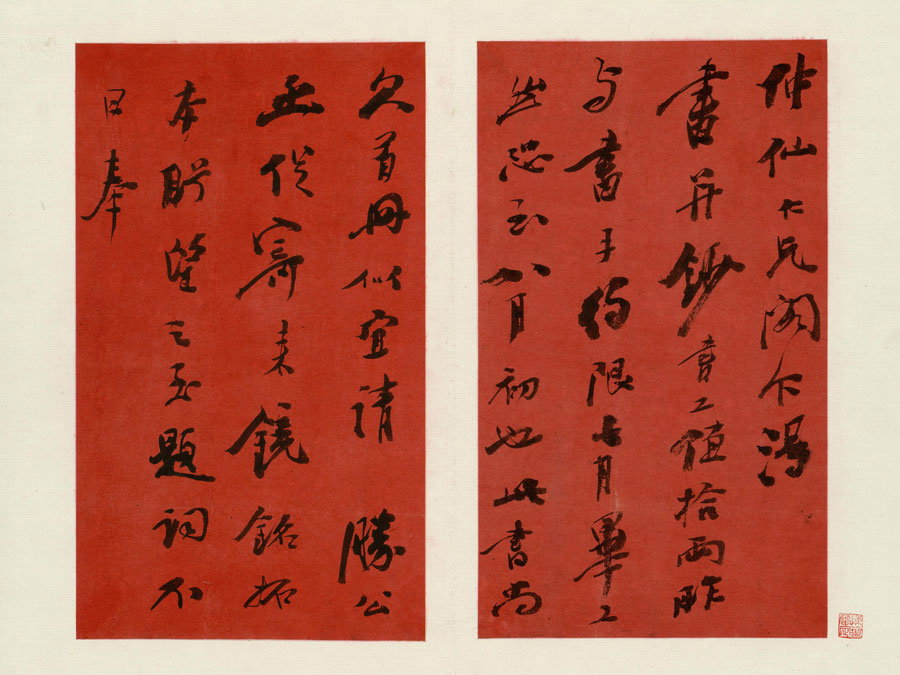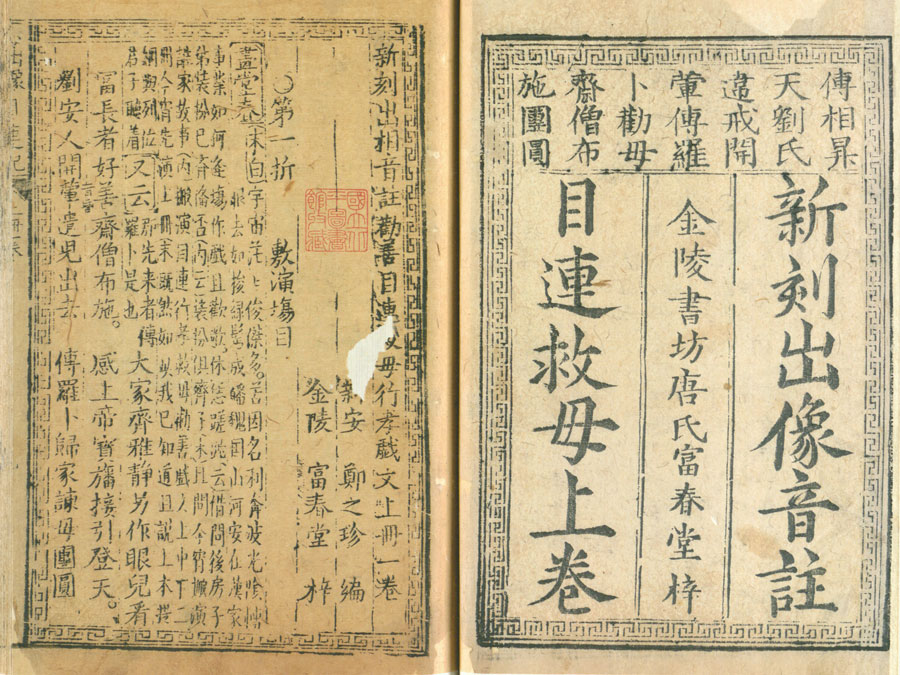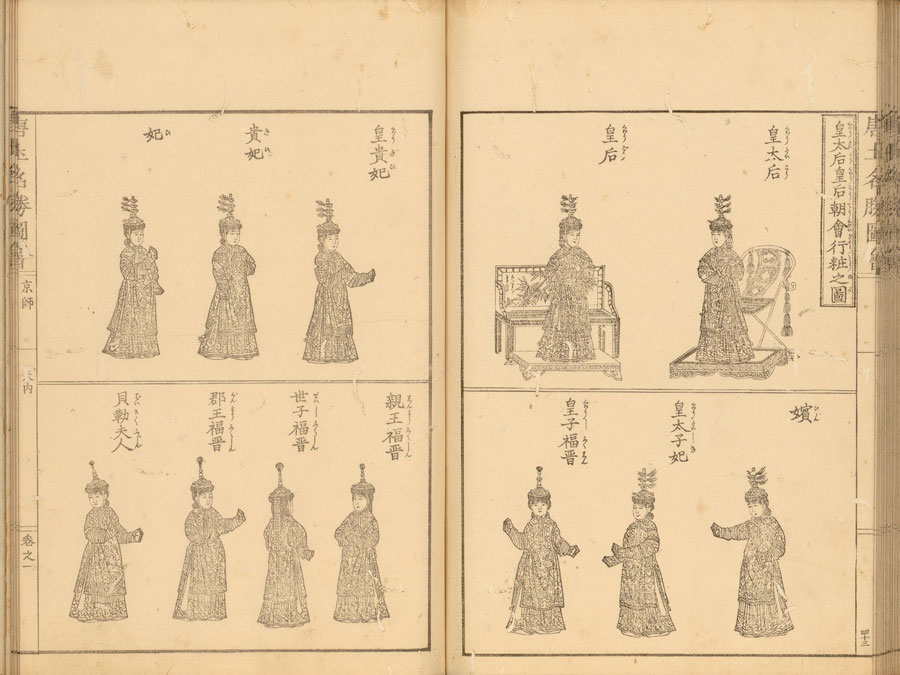A museum's identity hinges on the scope and quality of its collections. Although court collections from the Northern Song to the Qing dynasties have formed the backbone of the National Palace Museum's holdings, it has since its founding in Beijing in 1925 and its re-establishment in Taiwan in 1965 striven to acquire new objects and has received donations from the public sector and from private individuals around the world. These new additions have complemented the predominantly imperial collections and enriched the scope of the Museum's collections.
This section consists of three segments. "Works from the National Library of Peiping" provides an overview of rare books originally stored in the former National Library of Peiping; "The Guanhaitang Library" displays rare Chinese originals and Japanese imprints gathered in Japan by the bibliophile Yang Shoujing, an attaché to the envoy to Japan in the late Qing dynasty; and "Invaluable Donations" showcases the Song and Yuan works, local gazetteers, and various Qing literary anthologies bequeathed by donors. The items displayed in this section span four dynasties (Song, Yuan, Ming, and Qing) and are noteworthy for their dazzling variety. Whether exclusive and highly treasured masterpieces in the book world or fine editions published by private enterprises, all the books on view are precious resources for bibliographic research and for the understanding of the times in which they were produced. The meticulous editing and printing and elegant stationery also command admiration. Some of the rare books carry seal marks and annotations by their collectors, which were not only symbols of their appreciation for the collections assembled, but also indications to posterity of how the collections changed hands. The books themselves are vehicles for the transmission of knowledge and scholarly pursuits; they are also living embodiments of developments in printing techniques. Book collecting and appreciation involves an enchanting range of activities that can lead visitors into a wonderland. It is hoped that while visitors take in the beauty of the rare and antiquarian books, they are also appreciative of the great effort invested by bibliophiles through the ages in assembling and preserving them.
The Guanhaitang Library
Guanhaitang is the name of late Qing bibliophile Yang Shoujing's library, and the titles he collected stand out among the rare and antiquarian books housed in the National Palace Museum. Also known by his style name Xingwu and sobriquet Linsu Laoren, Yang was a native of Yidu in Hubei. He spent his whole life studying epigraphy, history, and geography, and his accomplishments in geography were second to none among scholars of his generation. He was also a proficient calligrapher, and his prowess in a variety of styles, including seal, official, cursive, running, and regular scripts, made him a celebrity in Japanese calligraphy circles, earning him the moniker "the father of modern Japanese calligraphy."
Starting in the 6th year of the Guangxu reign (1880), Yang Shoujing served as an attaché at the invitation of the Qing court's envoys to Japan, He Ruzhang (1838–1891) and Li Shuchang (1837–1897). During his diplomatic service, Yang searched for rare books and discovered many treasures, including books that had been lost in China, rare Chinese originals and their reprints in Japan and Korea, and medical titles. In the 10th year of the Guangxu reign (1884), as he concluded his diplomatic service, Yang brought all the books he collected in Japan back to China. Later on, he built the Linsu Garden in Huangzhou, Hubei, to store the books, before moving them to the newly constructed Guanhaitang in Juwan, Wuchang. Yang passed away in 1915 and his Guanhaitang Library was acquired by the Beiyang government. The government transferred part of the collection to the Songpo Library, now part of the National Library of China, and stored roughly half in Jilingyou in Beijing, before transferring these books to the Palace Museum in 1926. During the Second Sino-Japanese War, the Guanhaitang Library, comprising 1,634 titles in 15,491 volumes, was evacuated together with the Museum's artifacts to the hinterlands of southwestern China. Later, as the Chinese Civil War intensified, the Library was evacuated to Taiwan.
Works from the National Library of Peiping
In the late Qing dynasty, the court pushed for a series of reforms in the hope of keeping the dynasty in power. In the first year of the Xuantong reign (1909), Zhang Zhidong (1837–1909), a member of the Grand Council, proposed the founding of a Metropolitan Library in the capital. The institution was managed by the Ministry of Education (thus it was also known as the "Ministry of Education Library"), and in addition to the rich collections assembled from across the provinces, it housed rare books from the Song, Yuan, and Ming dynasties that had originally been stored in the Hanlin Academy, the Imperial Academy, and the Aarchives of the Grand Secretariat. At the time, the scope and quality of the Metropolitan Library was unparalleled in China.
In the 17th year of the Republican era (1928), the Metropolitan Library was renamed the National Library of Peiping. Following the Mukden Incident in 1931, the Library started to evacuate its collections southwards to places such as Shanghai and Nanjing. In 1941, its librarian Yuan Tongli (1895–1965) collaborated with Dr. Hu Shi (1891–1962), China's ambassador to the United States, and shipped 102 crates of fine rare books to be entrusted to the Library of Congress in Washington, DC. In 1965, Jiang Fucong (1898–1990), Director of both the National Palace Museum and the National Central Library in Taiwan, requested the return of the books, and the Library of Congress duly agreed. Towards the end of the same year, 102 crates of rare books arrived in Taiwan. Earlier in 1949, 18 crates of Ming and Qing dynasty historical maps from the National Library of Peiping had been shipped to Taiwan together with the Museum's artifacts. In 1985, the Executive Yuan agreed to transfer the 102 crates of rare books and the 18 crates of historical maps, all from the Qing imperial palace originally, to the National Palace Museum for collection. They were thus integrated into its holdings.
Invaluable Donations
Since its re-establishment in Taiwan in 1965, the National Palace Museum has received donations of precious rare and antiquarian books from collectors around the world, and starting in 1985, its annual acquisitions budget has enabled it to procure the highest-quality artifacts on the market and from private collectors. In the course of over 50 years, the Museum has acquired more than 41,000 rare and antiquarian books. With these new additions receiving the best care and being showcased in exhibitions for the general public and made accessible to scholars, their value is maximized and maintained.
It was in 1971 that the National Palace Museum started to accept donations of rare books, and over the years it has received the generous bequests of such prominent figures as the former Strategy Advisor to the President General Xu Tingyao (1892–1974), book collector Shen Zhongtao (1892–1980), former Defense Minister General Huang Jie (1902–1995), former ambassador to the Holy See Chen Zhimai (1908–1978), former Director of the Academia Historica Luo Jialun (1897–1969), and it former director Dr. Qin Xiaoyi (1921–2007). In addition to these generous gifts from individuals, institutions such as the Bureau of Military History and the Sun Yat-sen Library of Hong Kong have also donated parts of their collections to the Museum. On the other hand, in 1992 the Museum started acquiring rare books and has since collected a large variety of works covering all the four major types of Chinese classics - Jing, Shi, Zi, and Ji. Titles such as Critical Research of Shantang (Xinkan Shangtang Xiansheng Zhanggongjiang Kaoso), Scroll of the Mahabalagunadharani Sūtra (Daweide Tuoluonijing Juan), Tungxi Commentary on the Book of Changes (Tungxi Wanxiansheng Izhuan), Three Disasters of Jiangsu (Suhuan Sanduan), and Complete Book of Defense Strategems (Shoucheng Quanshu) are extremely rare surviving editions. The Museum’s current status as an important hub of rare and antiquarian books recognized by sinology circles around the world can be attributed to the donations and acquisitions which have greatly enriched its collections.



